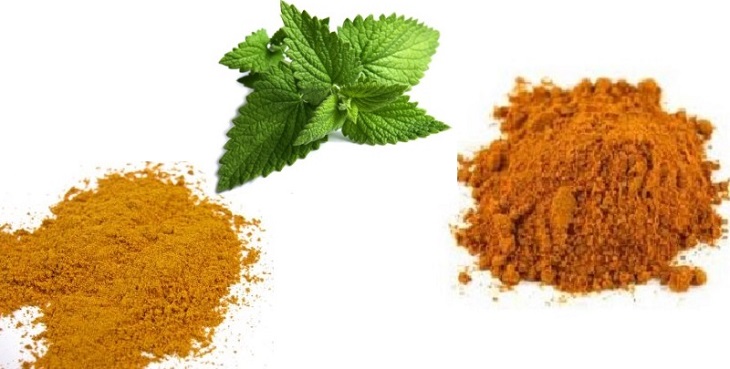Asian Americans and Pacific Islanders has had an impact on America not only through their service, but also through their traditional cuisine.
Traditional Asian and Pacific Islander food tends to be healthier and include a variety of spices and herbs. Rice, soy (like tofu), and legumes (beans) are all staple foods found in the regional cuisine. Each of these foods are versatile and nutrient dense. Spices are used to make traditional dishes such as sweet and sour chicken over rice, a vegetable tofu stir fry, or a peanut sauce to put on noodles (peanuts are a legume) using these staples.
Some common herbs and spices that are used in Asian and Pacific Islander cuisine are turmeric, mint and curry. Each of these flavorings is thought to have health benefits in addition to adding flavor to food. Always be mindful that high doses or supplements of some herbs and spices can influence certain medications. It’s best to check with your doctor or dietitian on the safety of using herbs and spices in combination with your medication regimen.
Turmeric is a bright yellow herb that is closely related to the ginger family of herbs. Turmeric smells slightly like mustard, but has a hot, peppery taste. It is commonly used in soups, sauces and rice dishes. The herb is a powerful antioxidant and is thought to aid in the body’s ability to reduce inflammation, protect the digestive tract and have antiseptic properties.
Mint is another herb that has interesting benefits other than taste. Before mint was used for fresh breath with products such as candies, gums and toothpastes, it was used to help with digestion, nausea and headaches. In food, mint can be found in teas, ice cream and sauces. It is even popular in the leaf form.
Lastly, curry is another spice that has benefits beyond taste. Curry comes from a plant native to tropical and subtropical regions. Curry is used in soups, rice and sauces. It provides healthy antioxidants. Specifically, curry is thought to have an impact on brain health.
Check out this Healthy Teaching Kitchen video to see how to create a spice rub. If you’d like to learn more about how to incorporate herbs and spices into your diet or have other nutrition-related questions, contact your local VA or PACT team and ask to speak with a registered dietitian.

Topics in this story
More Stories
Study underscores important role COVID vaccination can have in protecting Veterans from infection and reducing long-term health consequences
Columbia VA’s robotic surgery teams completed their 800th robotic surgery and are on schedule to hit 1,000 by the end of the year.
In a decentralized clinical trial, Veterans can participate from their own homes or local VA instead of having to travel to a research site.







Joe, you and Anais are both right and wrong: not only is ‘curry’ a mixture of various spices and herbs and varies widely from India, Thailand and other mostly-tropical cuisines and traditions… but there is also a single plant named ‘curry’ that tastes just like the mixture of spices, all in this one plant’s leaf. Astounding but true. The benefit of the curry powder that is composed of various spices and herbs is the presence of Turmeric. The yellow, green and red liquid curries from Thailand are various levels of ‘heat’ and often are coconut-milk-based. Any way that you eat it, curry is a flavorful addition to our diets. Having been a vegetarian since 1972, soon after my 1968-69 tour in Vietnam’s Mekong Delta where I fell in love with the cuisine, a variety of flavor-enhancing ingredients such as curry is a welcome addition not only to my taste buds but also for my health. Enjoy!!
Curry tree (Murraya koenigii or Bergera koenigii), a tree which produces an aromatic leaf often used in Indian cuisine. For the European plant sometimes referred to as curry plant, see Helichrysum italicum.
I’ve read that the Helichrysum italicum smells like curry but does not taste anything like it…make sure you get the right one or your meal will suffer lol.
Great article! While I think I’ve seen Turmeric in my spice rack I don’t think I’ve ever used it. Time to experiment…yeah antioxidants!
Thank you, Anais, for your excellent article about the “VA Healthy Teaching Kitchen: Add Asian, Pacific island flair to your diet with these 3 spices”.
As you wrote, turmeric, mint and curry flavor many tasty Asian dishes. However, “curry” is not a spice but a mixture of Asian herbs and spices, most often including turmeric, coriander and cumin. The word “curry” can also refer to the dishes that originated in India that include these spices with a variety of hot chilies.
Thanks again for your article and for studying to help Vets.
Joe